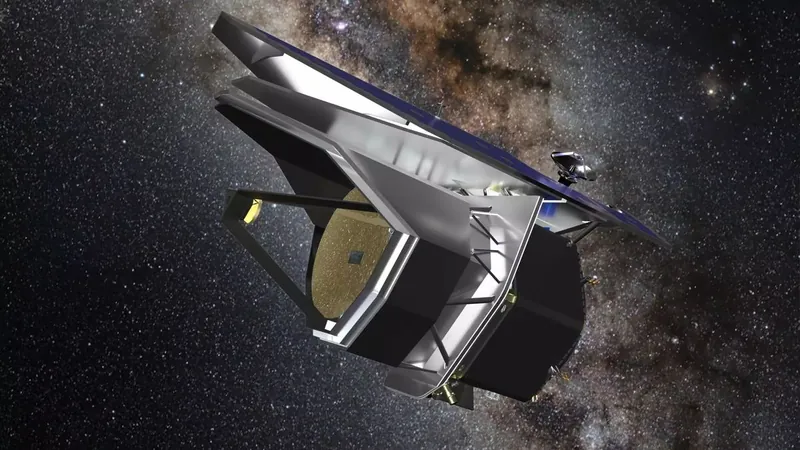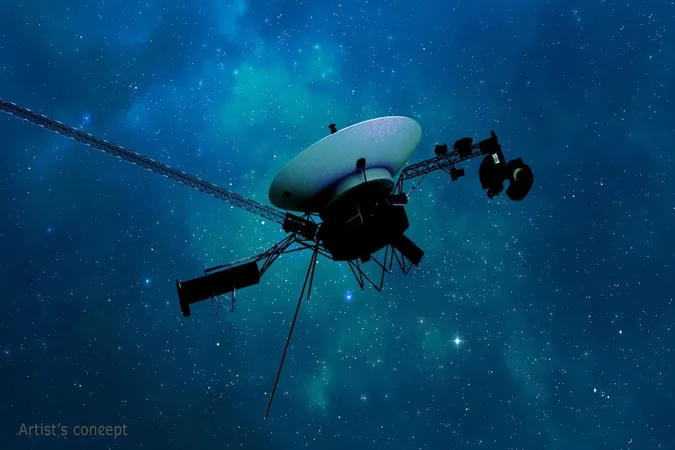
NASA's Cosmic Showdown: Two Revolutionary Space Telescopes Compete for a Historic Launch!
2024-11-28
Author: Ling
In an exciting development for astrophysics, NASA has set the stage for a head-to-head competition between two groundbreaking space telescopes, each vying to become the agency's inaugural Probe-class mission. This crucial design phase will determine which telescope will take to the cosmos, aimed at unlocking the universe’s most profound mysteries.
Meet the Contenders: PRIMA vs. AXIS
1. PRIMA (Probe far-Infrared Mission for Astrophysics): PRIMA aims to delve into the far corners of the universe, studying celestial phenomena at the longest infrared wavelengths. This mission is designed to fill the observational gap left between the infrared capabilities of the James Webb Space Telescope (JWST) and the wider electromagnetic spectrum captured by radio telescopes. Led by Jason Glenn from NASA's Goddard Space Flight Center, the international team gathered at the Jet Propulsion Laboratory to kick off the design study on November 8. With a technical focus on two high-precision instruments—PRIMAger (an imager) and FIRESS (Far-Infrared Enhanced Survey Spectrometer)—PRIMA promises to observe wavelengths between 24 and 261 microns. With a sensitivity set to be 100 times greater than its predecessors, it endeavors to detail the chemical compositions of planet-forming disks surrounding young stars, an unprecedented insight into star formation.
2. AXIS (Advanced X-ray Imaging Satellite): On the other side of the cosmic arena is AXIS, spearheaded by Chris Reynolds from the University of Maryland. AXIS is designed to investigate black holes in distant galaxies that were uncovered by the JWST. This mission will explore the relationships between black holes and their surrounding galaxies, how they influence their environments, and observe transient cosmic events — the fleeting bursts of X-ray light that signal cataclysmic incidents like supernovae or gamma-ray bursts. By aiming to capture the interactions of black holes formed over 13 billion years ago, AXIS could revolutionize our understanding of the universe’s evolution.
The Stakes and Timeline
Both campaigns have until 2026 to finalize their designs, thanks to an initial funding of $5 million allocated to each team. The winning proposal is expected to launch in 2032. With current concerns surrounding the aging Chandra X-ray Observatory, the timing of AXIS could not be more critical. It promises a continuum of X-ray observations to fill any potential service gap.
Meanwhile, PRIMA, with its focus on far-infrared wavelengths, will operate outside Earth’s thermal interference, necessitating extreme cryogenic cooling to approximately -269 degrees Celsius (-452 degrees Fahrenheit). This extraordinary requirement allows the use of cutting-edge superconducting sensors—Kinetic Inductance Detectors (KIDs)—which can vividly capture the energy and arrival times of individual photons, a feat pivotal for gathering detailed astrophysical data.
A New Era for Astrophysics
The eventual decision for NASA will be pivotal. The current astrophysics decadal survey highlighted the urgent need for new, medium-scale missions like these to bridge the gap until the next generation of "great observatories" can be developed. With the budget capped at $1 billion (excluding launch costs), these Probe-class missions present a remarkable opportunity to push the boundaries of our cosmic understanding without the extended timelines and exorbitant budgets associated with larger projects.
As we await updates from this thrilling cosmic competition, the prospect of gaining new insights about our universe—from the birth of stars to the enigmatic behavior of black holes—leaves many eager for the discoveries yet to come. Whichever mission triumphs, it promises a treasure trove of data that will enhance our knowledge of the universe in ways we have yet to fathom. Keep your telescopes focused and your eyes on the sky!




 Brasil (PT)
Brasil (PT)
 Canada (EN)
Canada (EN)
 Chile (ES)
Chile (ES)
 España (ES)
España (ES)
 France (FR)
France (FR)
 Hong Kong (EN)
Hong Kong (EN)
 Italia (IT)
Italia (IT)
 日本 (JA)
日本 (JA)
 Magyarország (HU)
Magyarország (HU)
 Norge (NO)
Norge (NO)
 Polska (PL)
Polska (PL)
 Schweiz (DE)
Schweiz (DE)
 Singapore (EN)
Singapore (EN)
 Sverige (SV)
Sverige (SV)
 Suomi (FI)
Suomi (FI)
 Türkiye (TR)
Türkiye (TR)